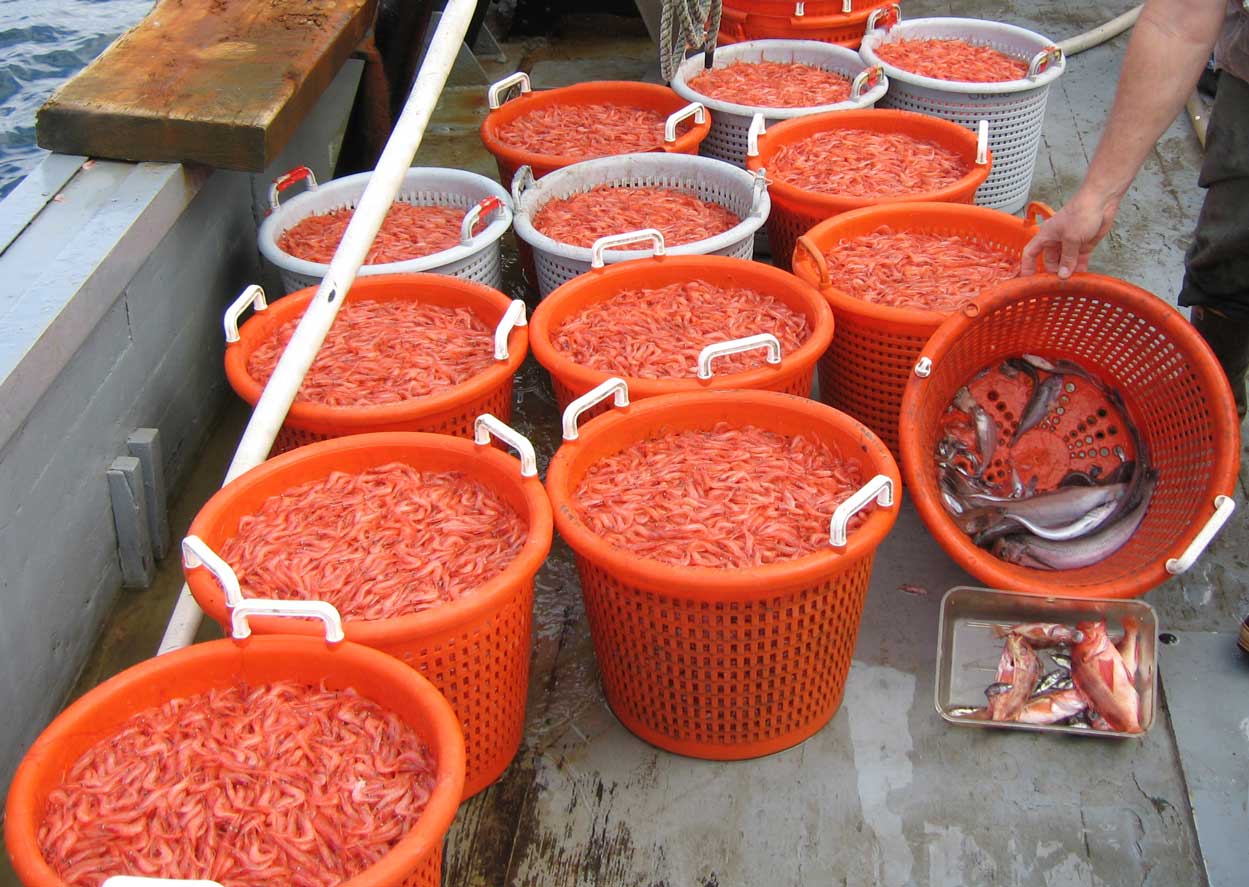Oregon pink shrimp trawlers wound up with a harvest of 26.85 million pounds for their 2019 season. Those are the preliminary numbers from PacFIN, and at ex-vessel prices of 74 cents per pound, fleet revenues crunch out to $19.94 million.
As predicted, the 2019 season came in with lower production than the 2018 season, in which the fleet of 64 trawlers put in its third best season on record with 35.8 million pounds and ex-vessel revenues of $26.9 million. Ex-vessel prices averaged 68 cents per pound in 2018.
The mix of age 1 and age 2 shrimp dovetailed in the 2018 fishery and drove the number of harvestable shrimp upward. Biomass modeling had predicted a strong showing of age ones, and they came through.
This year, it was a strong representation of 2-year-olds that drove the fishery, according to Scott Groth, the pink shrimp and south coast shellfish project leader with the Oregon Department of Fish and Wildlife, in Charleston.
“There were more 2-year-olds this year, and the 1-year-olds were a little shy, which brought the biomass down a bit.”
Groth adds that it took longer trips and longer tows to load up the boats than in years past.
“They had to work a lot harder to get what they got,” he says.
Among environmental factors that determine the strength of baby shrimp recruiting into the fishery, northerly winds cause upwelling and bring cooler waters near the coast, a combination that’s favorable for survival and growth. Weather patterns in 2015 and ’16 brought warm waters, less upwelling and mediocre shrimp production. Waters cooled in 2017 and ’18 but warmed toward El Niño conditions again this past season.
As for what’s in store for the 2020 season, which begins April 1 and runs until Oct. 31, Groth says that like others, he could only guess until more data comes in the new year. As a note of optimism, he says fishermen reported a few age-zeros showing up toward the end of the year.
As a bonus for the trawlers this year, Groth wrote a grant and received funding from NOAA to buy each of the participating vessels a case of LED lights, which are affixed to the lead ropes of trawls to drive eulachon away to avoid bycatch. This year, 77 vessels participated in the Oregon fishery, but Growth said the grant gave out lighting (at $1,000 per case) to more than 100 vessels working the waters of Oregon, Washington and California.







